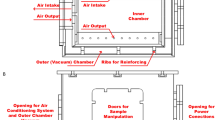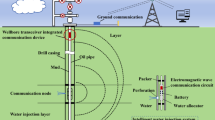Abstract
AFTER reading the experiments of Prof. Forbes on the telephone, in NATURE, vol. xvii. p. 343, it occurred to me, as probably it has done to others, that this instrument might be employed in comparing the electrical resistances of wires. Accordingly, two weak cells were connected with the ordinary form of Wheatstone's bridge, and the telephone placed in the position usually occupied by the galvanometer. The current was rendered intermittent by a small electromagnetic apparatus belonging to an electric bell; the bell itself having been detached, the intermitter was placed in a separate room, and connected by long wires with the battery and bridge. The German silver wire of the bridge, having a resistance of 2 ohms, was further lengthened at each end by resistance coils of ten ohms, and it was found that with a little practice one could easily compare two resistances of about two ohms within at least 1,000th of the true ratio.
This is a preview of subscription content, access via your institution
Access options
Subscribe to this journal
Receive 51 print issues and online access
$199.00 per year
only $3.90 per issue
Buy this article
- Purchase on SpringerLink
- Instant access to full article PDF
Prices may be subject to local taxes which are calculated during checkout
Similar content being viewed by others
Rights and permissions
About this article
Cite this article
TOMLINSON, H. The Telephone. Nature 17, 380 (1878). https://doi.org/10.1038/017380a0
Issue date:
DOI: https://doi.org/10.1038/017380a0
This article is cited by
-
The Helmholtz model
Journal of Solid State Electrochemistry (2024)



